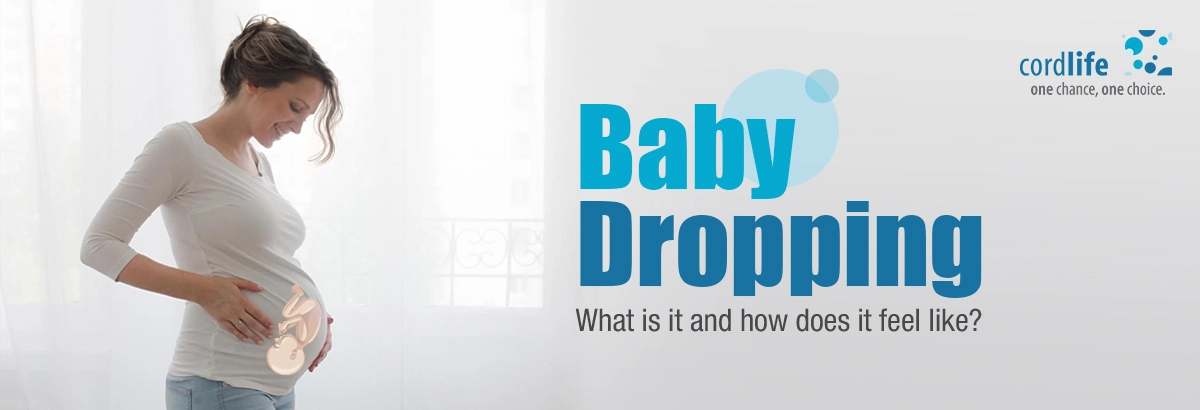Table of Contents
Baby dropping is one of the first signs of labour. In this situation, the baby flows into the pelvis and takes the final position inside the uterus before passing out of the birth canal. Since it is not easy to predict the actual time of childbirth, when you experience baby-dropping symptoms, it signals the onset of labour and childbirth.
Is Baby Dropping and Lightening Similar?
The answer right off the hat is “yes.” As the baby’s head “drops”, it actually settles into the pelvis. This position may be known as “engaged,” in which the baby’s head lowers first in the pelvis. This process is also known as “baby dropping” or “lightening.” Furthermore, during the process of “lightening,” space is created between the breasts and pelvis, and as a result of this space. You might feel lighter in the stomach.
When Does Lightening Occur?
It is not easy for doctors to predict the actual time of your child’s birth. That is because the signs of baby dropping are different for you, from the other would-be–mummies. If you are a first-time mummy, you may feel the signs of baby-dropping around two weeks before you deliver your baby. You might even feel this happen earlier. That is anytime between the 34th,35th to 36th week of pregnancy. Well! There are also some of you who may feel your baby taking position only a few hours before the onset of labour. Sometimes your baby may not necessarily drop, but that does not mean you will not have easy childbirth.
How Does the Baby Get Into the Baby-dropping Position?
As you proceed towards the due date and enter the various stages of labour, your baby’s head would also slowly take the position towards going to the birth canal. (Sometimes, your baby might be in a breech position also, in which the baby’s head, bottom, or hand may be towards the birth canal). Your baby’s position inside your womb is known as a foetal station. So, when your doctor checks the foetal position, in correspondence to your baby’s position in the birth canal, that is defined by positive and negative numbers. For instance:
- In -5 station: This position indicates that your baby inside would be floating and would be moving freely. Adding on to this, your baby would flip from being in the heads–up position to a heads-down.
- In +5 station: This position indicates that your healthcare provider would be able to see the baby’s head first. This is known as crowning.
- In -3 station: This position indicates that the baby is not engaged in the pelvis or its head is above it.
- In +3 station: At this point in labour, the baby’s head is beginning to emerge.
- In 0 station: This is the point in labour when your baby’s head has reached the end of the pelvis. At this point in time, you might feel the signs of a baby dropping.
What Are the Symptoms of Baby Dropping?
Having said all the above, as your little one passes down the pelvis, you will notice the following signs in your body. And the symptoms of baby dropping include:
- Due to the pressure on the lower abdomen, especially on the bladder, you may have frequent urination. You may visit the bathroom after every 10 seconds.
- Since your baby has dropped in your pelvis, there is significantly less pressure on your diaphragm. In this condition, you can also breathe easily.
- You may feel a lot of pressure in your pelvis. You may feel like a bowling ball between your legs. In this condition, you may “waddle” while walking.
- At this time, your cervix may dilate and ripen. As a result, you may notice an increased discharge in the last few weeks of your pregnancy.
- The pressure may affect the blood vessels in the rectum. It might lead to haemorrhoids.
How To Prevent It?
When you notice the baby dropping symptoms it means that very soon you will be holding your baby in your arms. Here are a few things you need to do about it.
- Go brisk walking and look out for the signs of false labour.
- Sitting cross-legged may push the baby up. Try to avoid it. Instead, sit with your knees spread open.
- Use a birthing ball to get some relief from the pain.
- Try doing some squats.
- Avoid sitting for a long time.
Remember, after your baby has dropped, it is just a matter of a few days, when you will be holding your little one in your arms. So, don’t forget your doctor’s appointment and before your child’s birth don’t forget to choose cord blood banking.
